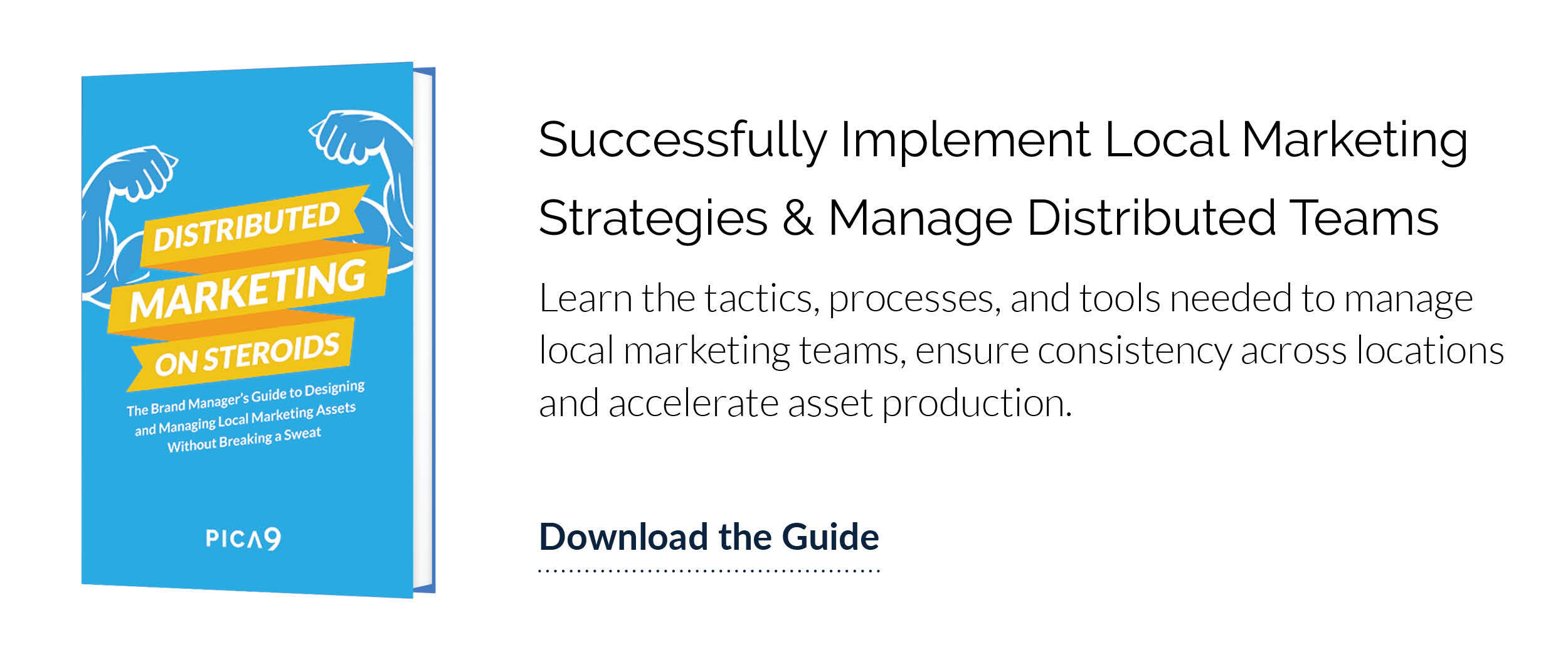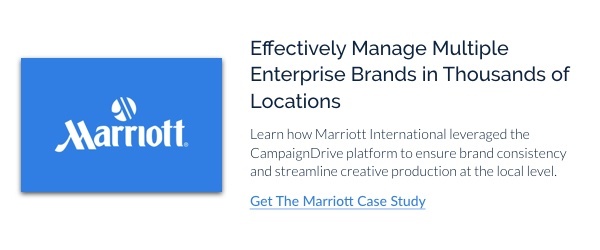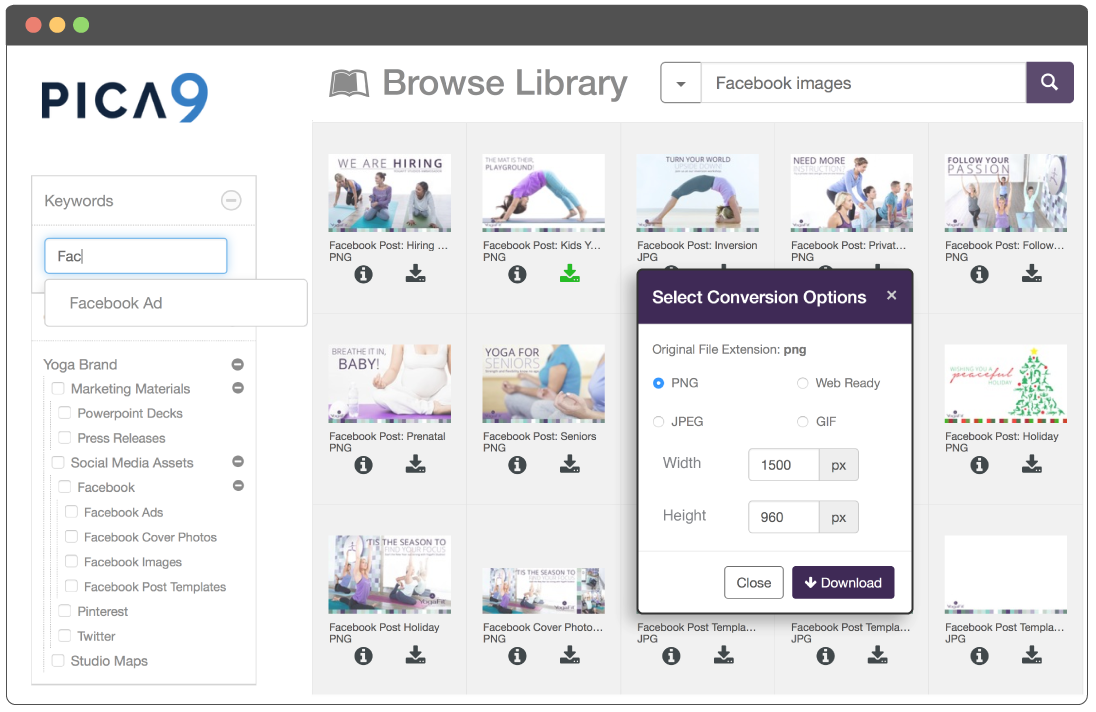A decade ago, marketing resource management (MRM) technology was the platform of choice for enterprise organizations. Today, the enterprise marketing technology stack is a little bit more diverse, and comprised of many specialized tools that need to be integrated together to form a single ecosystem.
The growing diversity, in the number and types of technology that enterprise organizations are using for marketing in 2017, can be attributed to explosive growth in the marketing technology (MarTech) landscape. In 2017, there are over 5,000 distinct MarTech solutions available (and nearly as many vendors) – a 30 percent increase from 2016.
Marketing Resource Management (MRM) technology has evolved accordingly, which Gartner recently acknowledged when they unveiled MRM 2.0. Today’s enterprise organizations still need to manage people, processes, and assets, but their needs may not be met effectively with a single piece of enterprise software. MRM 2.0 is a result of this change, and a platform for the introduction of three new, key MRM subcategories: Work Management, Asset Management, and Performance Management.
A Brief History of Marketing Resource Management
In 2017, Marketing Resource Management is best understood as a mega-category within MarTech. MRM is made up of technologies and applications whose purpose is to coordinate people, processes, and assets for marketing. Over the past 16 years, the function of the tools that fall within the technical definition of MRM has evolved significantly.
In early 2001, Gartner published a groundbreaking report titled Marketing Resource Management: The Big Picture. In the report, Gartner acknowledged the increasing importance of this category of technology and accelerated innovation in the market.
Seven years later, Gartner further defined MRM by publishing The Five Competencies of MRM "Re"-Defined. This report classified the core functionalities that an MRM system needed in order to be a truly enterprise-class solution under existing definitions: strategic planning, creative management, knowledge management, marketing fulfillment and performance management.
Over the next 8 years, Gartner continued to publish its annual "Magic Quadrant Report" and other analyst groups also evaluated on-going market factors like vendors, changes in the landscape and technology trends. During this same period of time, global changes in consumer behavior and advancements in enterprise technology continued to evolve at a meteoric rate.
Increased adoption of cloud apps, consumer demand for digital marketing experiences, and other large-scale factors in how enterprise organizations thought about marketing, drove change in best practices. Accordingly, the best technologies for managing marketing resources have also evolved for many brands.
Making Sense of the MRM Landscape in 2017
“The tools and technologies known as marketing resource management (MRM) have evolved," writes Gartner’s Chris Ross and Adam Sarner. The introduction of the three sub-categories of MRM 2.0 is a nod to the fact the current MarTech landscape is very fluid. The boundaries between the types of technologies organizations need are not always very well-defined.
As an enterprise brand manager, you’re familiar with many types of sales or marketing technologies that are quite well-defined. Customer Relationship Management (CRM), Marketing Automation (MA), and Content Management System (CMS) tools play unique and distinct roles in an enterprise organization that are generally well-understood. In contrast, many MRM technologies such as Distributed Digital Asset Management (DAM) offer major benefits surrounding asset and performance management, but are less well known. The rapid growth and change in the MRM landscape leaves the technology open to a brand or vendor’s interpretation of just where their application fits into the MRM 2.0 landscape.
Coming up with the perfect way to categorize marketing technology may not necessarily be realistic in today’s changing landscape. However, MRM 2.0 represents an effort to capture the organic evolution in how enterprise organizations interface with technology for managing people, processes, and assets:
- Work Management: Managing marketing inputs, including marketing strategy, design work, and other aspects related to the creation of assets through the mobilization of people.
- Asset Management: Managing marketing outputs, including the ingestion, categorization, and retrieval of marketing assets, including creative files, design files and other aspects of advertising.
- Performance Management: Managing marketing outcomes, including the performance of the overall marketing organization, and if applicable, the performance of advertising at local stores, dealerships, or franchises.
Looking to the Immediate Future: The Potential Impact of MRM 2.0
MRM 2.0 is unlikely to represent the beginning of a drastic, or immediate, shift in how organizations manage their marketing resources. More likely, it’s an effort to capture how enterprises’ needs are best served through several core technologies. Brand managers may be able to anticipate how vendor categories of work, asset, or performance management will become more stable in the months or years to come.
Moving forward, MRM 2.0 represents a shift in how brand managers view the enterprise MarTech stack, and could impact both buying and procurement strategies. By understanding MRM as a set of processes, instead of rigid technologies, organizations can become more effective at selecting technology that works for them - instead of the other way around. Many organizations have already adopted this mindset by searching for vendors that align with these subsets, their business model, and other unique specifications.
Will Marketing Resource Management Continue to Evolve?
For most brand managers, mobilizing a campaign strategy involves the effective coordination of people, files, data and workflows. However, if changing customer landscapes and marketing best practices continue to evolve, the idea of marketing resources could mean something much different in the future than it does today. In the more distant future, marketing resources could include connected internet of things (IoT) technologies, increased integration of big data sets, or other factors that require new categories of MRM technology.
While it's fun to speculate on the future of MRM 2.0, brand managers are wise to consider the rapid growth of the MarTech industry today. As thousands of new vendors enter the marketplace each year, it’s logical to accept that software for managing work, assets, and performance will also become more refined and specialized.
Brand managers who embrace the changing marketplace and adopt specialized applications like Local Marketing Automation (LMA) or Distributed Digital Asset Management can get ahead of the curve with the changing nature of today’s MRM options. Using technology to work more effectively allows enterprise brands to unlock better stakeholder satisfaction and, most importantly, superior marketing results.






